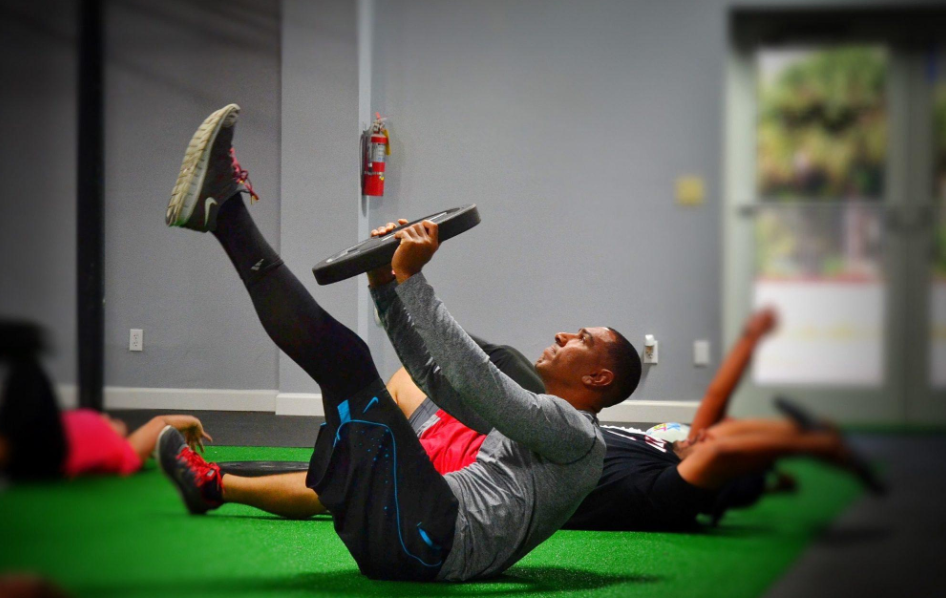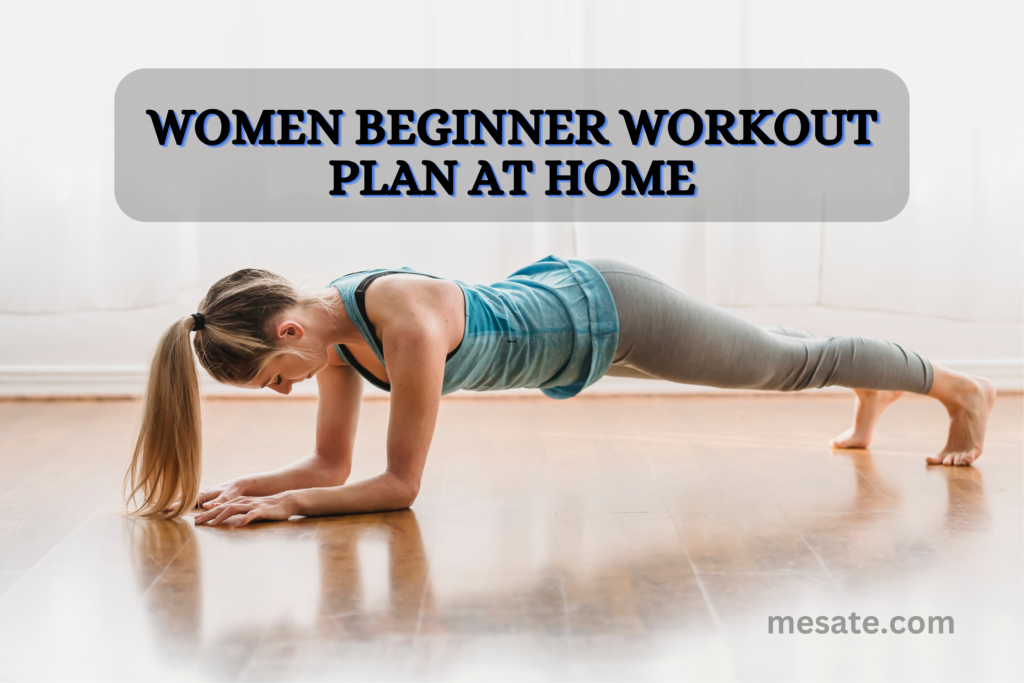Embarking on a fitness journey can feel daunting, especially for beginners. But worry not, ladies! This comprehensive beginner workout plan for women is your roadmap to a healthier, happier you.
We’ll guide you through every step, from mastering foundational exercises to building strength, boosting confidence, and igniting your passion for fitness.
Remember, this plan is a flexible framework, not a rigid set of rules. Adjust it to your preferences, fitness level, and available time. Listen to your body, celebrate milestones, and most importantly, have fun!
Laying the Foundation
Before diving into specific workouts, let’s establish a solid foundation. Here are some key principles to embrace:
- Warm-up and cool-down: Dedicate five to ten minutes to gentle movements like dynamic stretches and light cardio before each workout. Similarly, wind down with static stretches to improve flexibility and prevent injuries.
- Proper form is paramount: Focus on technique over weight. Master bodyweight exercises before introducing weights to avoid injury and maximize effectiveness.
- Mind-muscle connection: Be mindful of which muscles you’re engaging during each exercise. This ensures you’re targeting the right areas and reaping the full benefits.
- Consistency is key: Aim for at least three workout sessions per week, with rest days in between for recovery. Even short, consistent workouts are more effective than sporadic, intense sessions.
- Fuel your body: Nourish your body with a balanced diet rich in fruits, vegetables, whole grains, and lean protein to support your fitness journey.
- Stay hydrated: Drink plenty of water throughout the day, especially before, during, and after workouts, to maintain optimal hydration levels.
Beginner-Friendly Workout Routines

Now, let’s get moving! Here are three sample workout routines you can rotate throughout the week, focusing on different muscle groups each time:
Full-Body Strength Workout
- Squats (3 sets of 10-12 reps): Stand with feet shoulder-width apart, toes slightly outward. Lower your hips back and down as if sitting in a chair, keeping your back straight and core engaged. Push through your heels to return to standing.
- Lunges (3 sets of 10 reps per leg): Step forward with one leg, lowering your hips until both knees are bent at 90-degree angles. Push through your front heel to return to standing. Repeat on the other side.
- Push-ups (3 sets as many reps as possible): Start in a plank position with hands shoulder-width apart. Lower your chest towards the ground, keeping your elbows close to your body. Push back up to the plank position. Modify on your knees if needed.
- Rows (3 sets of 10-12 reps): Use resistance bands, dumbbells, or a bodyweight row. Pull your elbows back towards your sides, squeezing your shoulder blades together. Lower weights/body back to the starting position.
- Plank (3 sets of 30-60 seconds): Start in a push-up position with your forearms on the ground. Engage your core and keep your body in a straight line. Hold for as long as you can with good form.
Upper-Body Focus
- Dumbbell shoulder press (3 sets of 10-12 reps per side): Hold dumbbells at shoulder height, palms facing inwards. Press weights straight overhead, then lower back to the starting position.
- Bicep curls (3 sets of 10-12 reps per arm): Hold dumbbells with palms facing forward. Curl weights towards your shoulders, squeezing your biceps at the top. Lower weights back down slowly.
- Tricep extensions (3 sets of 10-12 reps per arm): Hold dumbbells overhead with palms facing down. Lower weights behind your head, keeping your upper arms close to your head. Extend weights back up to the starting position.
- Lateral raises (3 sets of 10-12 reps per side): Hold dumbbells with palms facing down at your sides. Raise weights out to the sides until your arms are parallel to the floor, then lower back down.
- Supermans (3 sets of 10-12 reps): Lie on your stomach with arms and legs extended. Lift your head, chest, arms, and legs off the ground simultaneously, hold for a second, then lower back down.
Lower-Body Blast

- Deadlifts (3 sets of 10-12 reps): Stand with feet hip-width apart, holding dumbbells or a barbell in front of your thighs. Hinge at your hips, keeping your back straight, and lower the weights towards the ground until your hamstrings are parallel to the floor. Pause, then stand back up to the starting position, squeezing your glutes. Modify with lighter weights or body weight if needed.
- Glute bridges (3 sets of 15-20 reps): Lie on your back with your knees bent and feet flat on the floor. Lift your hips off the ground until your body forms a straight line from shoulders to knees. Squeeze your glutes at the top, then slowly lower back down.
- Step-ups (3 sets of 10-12 reps per leg): Step onto a sturdy bench or platform with one leg. Push through your standing leg to bring your other leg up onto the platform. Step back down and repeat on the other side.
- Calf raises (3 sets of 15-20 reps): Stand on the balls of your feet, holding onto a wall or chair for balance if needed. Lift your heels as high as you can, then slowly lower back down. Repeat for the desired number of repetitions.
Cardio for Conditioning
Building strength is crucial, but incorporating cardio is equally important for boosting your heart health, burning calories, and improving overall fitness.
Aim for at least 150 minutes of moderate-intensity cardio or 75 minutes of vigorous-intensity cardio per week. Here are some beginner-friendly cardio options:
- Brisk walking or jogging: Start with a pace you can comfortably maintain for a sustained period and gradually increase your speed or distance as you get fitter.
- Swimming: A low-impact yet effective form of cardio that’s easy on your joints.
- Cycling: Whether outdoors or on a stationary bike, cycling is a great way to get your heart rate up and burn calories.
- Dancing: Put on your favorite tunes and shake it out! Dancing is a fun and effective way to get your heart pumping.
- Group fitness classes: Join a beginner-friendly class like Zumba, aerobics, or HIIT for a motivating and social workout experience.
Mind-Body Connection
Remember, fitness isn’t just about physical exercise. Cultivating a healthy mind-body connection is essential for holistic well-being.
Here are some practices to incorporate:
- Mindfulness: Take time each day to practice mindfulness through meditation, journaling, or simply focusing on your breath. This can help reduce stress, improve focus, and boost your overall well-being.
- Sleep: Aim for 7-8 hours of quality sleep each night to allow your body to recover and rebuild.
- Stress management: Find healthy ways to manage stress, such as yoga, deep breathing exercises, or spending time in nature.
Progress and Motivation

Stay motivated throughout your fitness journey by setting realistic goals, tracking your progress, and celebrating your achievements. Remember, every step forward, no matter how small, is a victory!
Here are some tips for staying motivated:
- Set SMART goals: Specific, Measurable, Achievable, Relevant, and Time-bound goals will keep you focused and on track.
- Track your progress: Keep a workout log or use a fitness app to monitor your progress. Seeing your improvements can be a powerful motivator.
- Reward yourself: Celebrate your milestones with non-food rewards, such as a new workout outfit, a massage, or a weekend getaway.
- Find a workout buddy: Having a friend to exercise with can make workouts more enjoyable and help you stay accountable.
- Don’t compare yourself to others: Focus on your journey and avoid comparing yourself to others. Everyone progresses at their own pace.
- Embrace the journey: Enjoy the process of getting fit and celebrate the small wins along the way.
Remember, the most important thing is to find what works for you and make fitness a sustainable part of your lifestyle. This beginner workout plan for women is just a starting point. So, lace up your sneakers, put on your favorite playlist, and get ready to conquer your fitness goals!
Resources and References
- American College of Sports Medicine: https://www.acsm.org/
- Centers for Disease Control and Prevention: https://www.cdc.gov/physicalactivity/index.html
- National Institutes of Health: https://www.nih.gov/
- Mayo Clinic: https://www.mayoclinic.org/
FAQs about Beginner Workout Plans for Women
How often should I work out as a beginner?
Aim for at least 3 workout sessions per week, with rest days in between for recovery. 20-30 minutes per session is plenty to start, and you can gradually increase the duration and intensity as you get fitter. Consistency is key, so even short, regular workouts are more effective than sporadic, intense sessions.
What exercises should I do in my beginner workout plan?
Focus on compound exercises that work for multiple muscle groups at once, such as squats, lunges, push-ups, rows, and planks. These exercises provide a great foundation for building overall strength and fitness. You can also incorporate bodyweight exercises like situps, jumping jacks, and burpees for a cardio boost.
What if I can’t do certain exercises?
Don’t worry! There are always modified versions of exercises that you can do if you have limitations or injuries. For example, you can do wall squats instead of regular squats, or incline push-ups instead of regular push-ups. Listen to your body and don’t push yourself too hard.
Do I need weights to get results?
You can get great results with your body weight alone, especially as a beginner. However, once you start to get stronger, you can add weights to your workouts for an extra challenge. Start with light weights and gradually increase the weight as you get stronger.
What should I eat to support my workouts?
Fuel your body with a balanced diet rich in fruits, vegetables, whole grains, and lean protein. This will provide you with the energy you need to power through your workouts and help your body recover afterward. Don’t forget to stay hydrated by drinking plenty of water throughout the day.
How can I stay motivated to stick with my workout plan?
Find an activity you enjoy and set realistic goals for yourself. Track your progress and celebrate your milestones. Don’t be afraid to ask for help from a friend, family member, or personal trainer. Most importantly, remember that fitness is a journey, not a destination. Enjoy the process and be patient with yourself!


